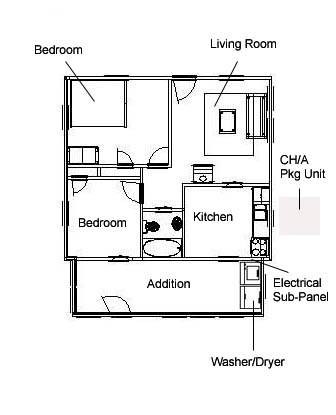
Plans for new addition:
The existing house is frame, pier and beam construction. The original house is 26'x23'. The existing addition is 24'x7'. Below are the basic plan layout, 3D model and two actual photos.

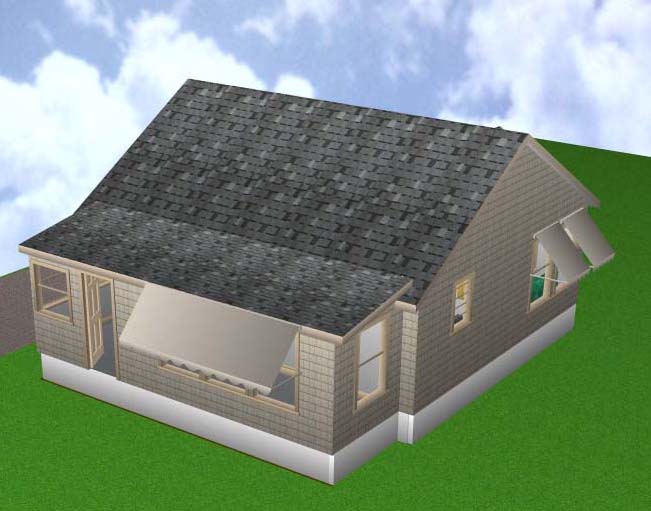
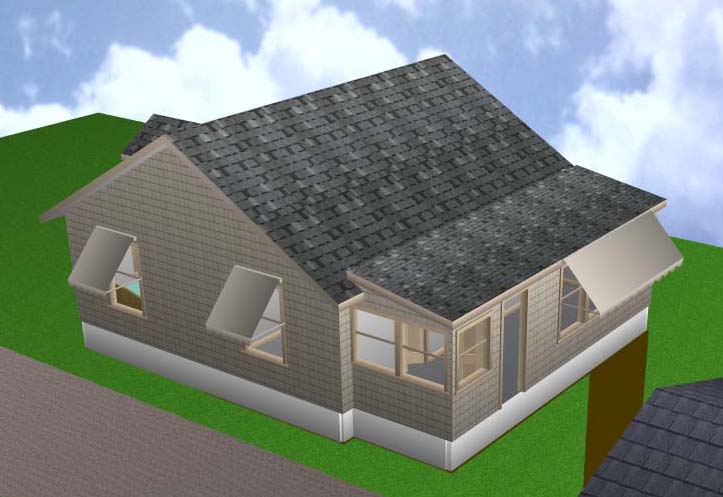
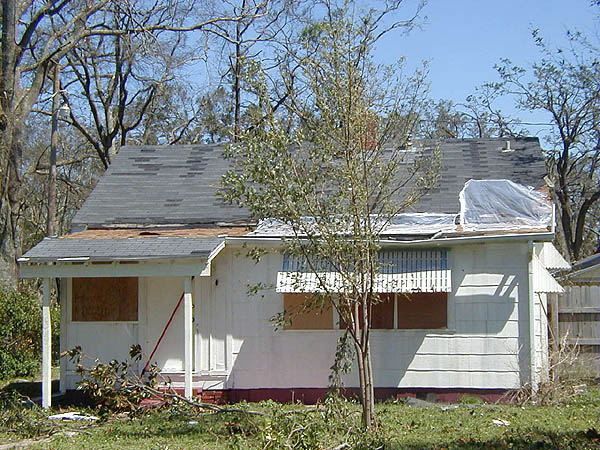
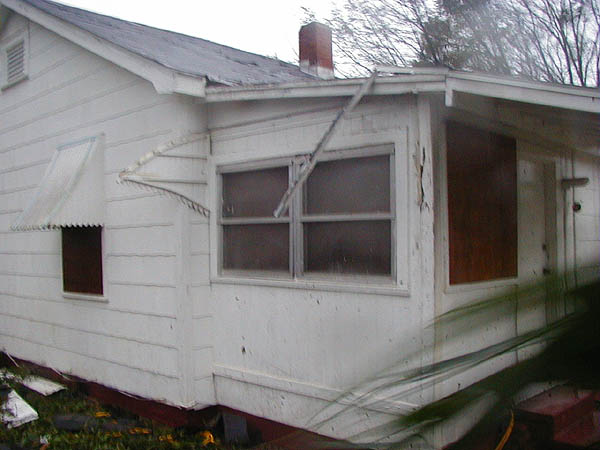
The addition took heavy damage during the hurricane, and the needed repairs will basically strip it down to the studs/floor (even the roof decking on this entire section will have to be replaced).
What I'd like to do instead of just making repairs, is to tear off the existing 24'x7' addition, down to the foundation, and have it rebuilt something like the following plan/3D models:
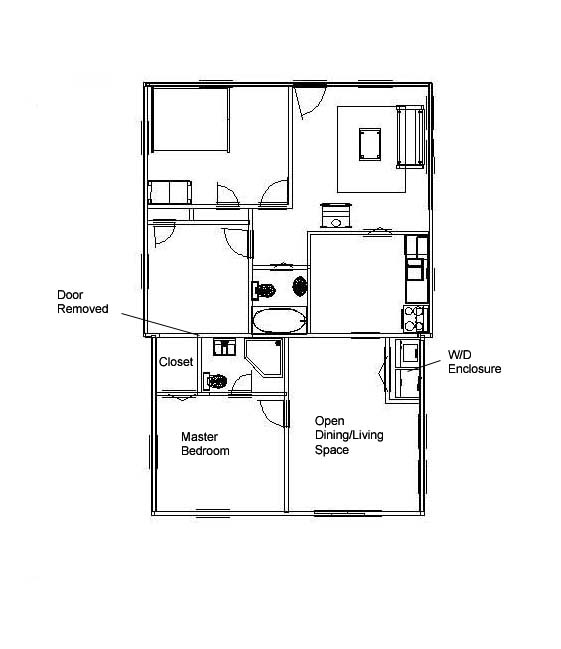
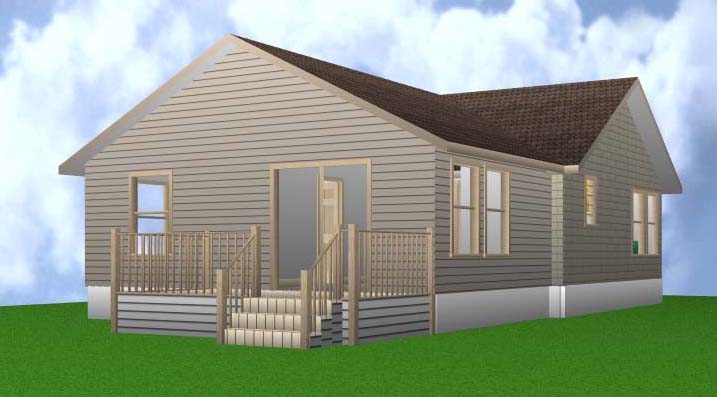
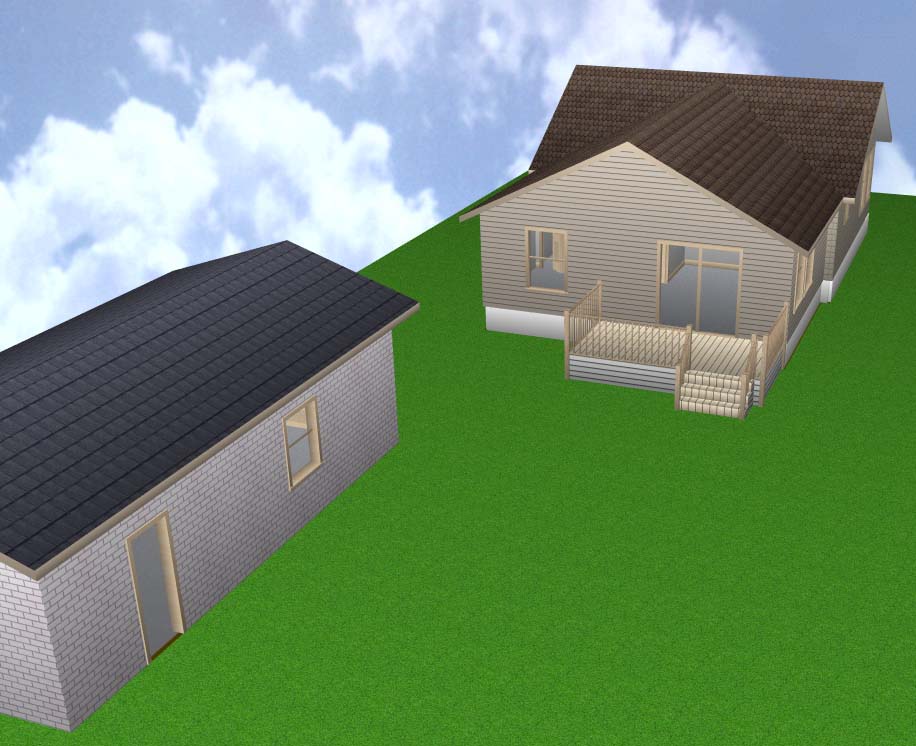
(note: the structure in the bottom left is an existing block garage that is placed for realism, it is not anything to be considered in an estimate. The deck shown is a possible future addition, but is not planned for right now).
The new plan is 24'x16', adding a master bedroom/bath/closet, laundry enclosure, and open dining/living space.
Foundation: Should be able to use the existing 24'x7' foundation run, adding on another pier-and-beam section at 24'x9' (this is also how the current addition is done - they left the existing house foundation and just ran a new section, enlarging the access 'hole' between the two in the process).
Exterior Ground: Maple tree will probably have to go (planned area comes within 2' of tree). Am not sure where the septic tank is in the back yard, it may or may not be a factor. There is buried PVC for plumbing within 2' of the current foundation (previous homeowner was directed to connect the washing machine discharge with the septic, rather than being a graywater discharge to the back yard. The inspector who signed off on it stated that it was too close for code, but said they would allow it). There is buried electrical between the house and detached garage, but it is well outside the planned expansion area (estimate at least 5' from planned new foundation). Ground is mostly sand.
Structure: The siding on most of the existing addition is asbestos tile, and probably will be removed by another party who will re-use the tiles rather than disposing of them. The existing windows are probably not worth saving both due to damage (4 of them are swelled shut) and energy inefficiency. Would like to put in new vinyl double-pane, double-hung windows, of a standard size (4 total, two in the new bedroom and two in the new dining/living space). Siding for the new addition can be vinyl. One existing door (from the back bedroom to the current addition) will need to be taken out/closed over - the other can remain (it is an arched opening from the kitchen to the addition).
Roof: The roof probably should be cross-gabled to the existing peak (estimated pitch on existing gabled section is 6:12). On this side of the existing roof there is a brick chimney that is unused and can be removed if needed, a metal stovepipe that goes to an existing gas fireplace, and a bathroom vent that will need to be extended to meet the new roof.
Plumbing: The new bathroom is planned near the existing one, and the laundry enclosure (basically a closet with bifold doors, that surrounds the W/D) is located where the current W/D are now. Another possible change is to relocate the hot water heater (electrical) from the kitchen to the new W/D enclosure as well. This should minimize the amount of new plumbing that has to be run.
Electrical: The electrical sub-panel is located on the original house wall, facing the existing addition (it's over the washing machine), and will not have to be relocated. It will have to be replaced because it's small and all the C/B slots are currently filled. Though the house electrical as a whole has not been upgraded, the exterior service and electrical run to the sub-panel have been upgraded (it is now 200-amp, with 100-amp to the sub). New wiring can be tied in straight to the sub and be up to code, and there is a ground for the required GFIC circuits. The electrical to be removed/relocated in the existing addition is minimal - two wall outlets, one exterior light at the back door, no overhead lighting, and the W/D electrical (dryer 220V is currently PVC-run along the wall from the outlet to the subpanel, is not inside the wall until just under the sub).
HVAC: Central heat and air are supplied via a package unit located on the side of the original house. Ducting is direct from the unit, under the house to floor registers. The ducting is flexible rather than rigid. There are two registers in the current addition which could easily be relocated/reused in the new, plus more would need to be added to accommodate the new larger addition.
Cable - runs under house, and there is one section going to the existing addition that is only coming up thru the floor (is not in a wall outlet). This can be split for wall outlets in the bedroom and open living area.
Phone - star-pattern homerun from NID, under house. There is a modular jack in the current addition, on the outside wall - jack is not wall-installed, only screwed into the baseboard. Existing wiring can be used for new bedroom, and bedroom jack can be daisy-chained to another jack in the new living area.
Interior Finish - negotiable on type and level of finish. Basic plan is for drywall, standard-height ceiling probably with blown popcorn, and carpet (rest of the house is lath/plaster, pine tongue-and-groove ceiling, hardwood floors - too expensive to try to match). Bathroom plans are for a prefab corner shower, standard toilet, small pedestal sink (nothing fancy), medicine cabinet over sink, undecided on floor cover but probably vinyl tile. Standard trim/molding throughout.
I am not 'stuck' on this particular plan in part or in whole - am fully open to suggestion. This was just what seemed potentially the most affordable, making the best use of the new space with the least amount of new interior walls that would need to be built, and the least amount of plumbing relocation/addition.